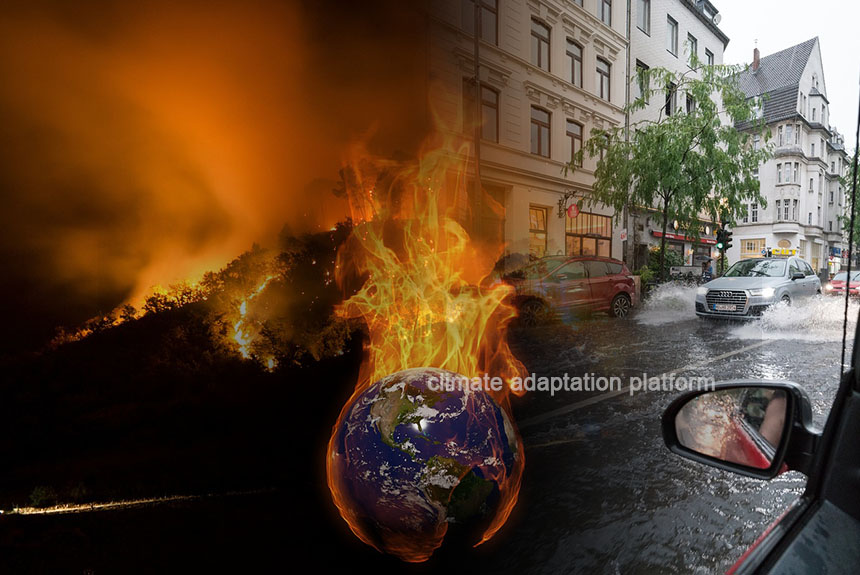Global temperatures for June 2024 were the hottest on record, with an average temperature of 1.5°C above the June average during the pre-industrial levels or between 1850-1900.
It is also the 12th consecutive month where the average temperatures have reached or broken the 1.5°C threshold, according to EU’s Copernicus Climate Change Services (C3S).
The global average temperature for the past 12 months (July 2023 – June 2024) is the highest on record, at 0.76°C above the 1991-2020 average and 1.64°C above the 1850-1900 pre-industrial average, the European climate service says.
The Paris Agreement commits countries to keeping global average temperature increases below 2°C and aims to limit warming to 1.5°C by 2100. This recent report from Copernicus does not mean that countries have failed to honour their commitments because the temperature limit set by the Paris Agreement targets over twenty or thirty-year periods, according to the IPCC AR6 report, rather than just a single year. However, a warming world will expose more people to scorching heat and put the world dangerously close to reaching climate change’s tipping points.
The IPCC defines a tipping point as irreversible changes in the climate system with further global warming. As warming levels increase, so do the risks of species extinction or irreversible biodiversity loss in ecosystems, including forests, coral reefs, and Arctic regions. At sustained warming levels between 2°C and 3°C, the Greenland and West Antarctic ice sheets will be lost almost completely and irreversibly over multiple millennia, which can cause several metres of sea level rise. Ice mass loss increases with higher surface temperatures (Climate Change, 2023).
As global temperature continues to rise, the world is already witnessing the effects of climate change unfolding worldwide. Just over halfway through 2024, extreme events are already happening worldwide. In the US, wildfires broke out in California in early July, with the swath of the country in the grip of a record-breaking and dangerous heatwave.
In April and May, Asian countries such as India, Pakistan, Thailand, and the Philippines suffered a deadly heatwave with temperatures exceeding 42°C. In April, Brazil’s state of Rio Grande du Sul and Dubai, UAE, were hit by severe floods. In Brazil, the floods killed at least 165 people and displaced more than half a million people. Extreme downpours caused Dubai’s flooding, the city’s heaviest in 75 years.
In response to the growing impacts of climate change, a new type of infrastructure asset—green infrastructure has gained prominence. Green spaces, such as parks, forests, and roofs, can absorb carbon dioxide from the atmosphere and mitigate the urban heat island effect by providing shade and evaporative cooling. This can lower temperatures in cities and make them more resilient to heat waves.
Cities and communities worldwide are also increasingly implementing blue-green infrastructure to complement grey infrastructure. Climate change is increasing the amounts of rainfall and stretching the capacity of the grey infrastructure that was once sufficient to cope with the rain.
Wetlands, permeable pavements, and rain gardens can manage stormwater runoff, reducing the risk of floods. Green infrastructure supports biodiversity by providing habitats for various species, filtering air pollutants, and improving air quality. It also boosts community well-being. Access to green spaces improves mental and physical health, which can help communities better cope with the stresses and challenges posed by climate change.
An article by Robert C. Brears, “Climate-Resilient Cities: Embracing Blue-Green Infrastructure for Sustainable Stormwater Management”, discusses how blue-green infrastructure can help cities become resilient to the increasing frequency and severity of extreme events and provides examples.
The article notes that “BGI improves stormwater management and climate resilience and integrates natural elements into urban settings, yielding diverse environmental, social, and economic rewards. Understanding the scope and multifaceted benefits of BGI is essential as it becomes an integral part of contemporary urban planning.”
For instance, rainwater harvesting systems can effectively manage stormwater by collecting rain for later use. It can reduce stormwater pollution and lower water bills. Bioswales and biorentention systems, sometimes called rainwater gardens, are made of vegetation, grass, and rocks and can capture and store water runoff. They can remove sediments and contaminants and reduce stress on stormwater management systems.
Permeable pavements are made of concrete or asphalt with holes or spaces between them to allow rainwater to percolate underground. They filter out pollutants, reduce the need for road salt and lower construction costs.
Other examples of blue-green infrastructure that Brears presents include green streets and alleys, green parking, green roofs, urban forests, and constructed stormwater wetlands. He calls these forward-thinking solutions to the mounting climate change challenges in urban areas.
Sources:
Copernicus: June 2024 marks 12th month of global temperature reaching 1.5°C above pre-industrial. (2024, July 4). Copernicus. Retrieved from https://climate.copernicus.eu/copernicus-june-2024-marks-12th-month-global-temperature-reaching-15degc-above-pre-industrial
Tracking breaches of the 1.5⁰C global warming threshold. (2023, June 15). Copernicus. Retrieved from https://climate.copernicus.eu/tracking-breaches-150c-global-warming-threshold
IPCC, 2023: Summary for Policymakers. In: Climate Change 2023: Synthesis Report. Contribution of Working Groups I, II and III to the Sixth Assessment Report of the Intergovernmental Panel on Climate Change [Core Writing Team, H. Lee and J. Romero (eds.)]. IPCC, Geneva, Switzerland, pp. 1-34, doi: 10.59327/IPCC/AR6-9789291691647.001
2024’s Climate Crisis: Extreme Weather Around the Globe Signals The Urgent Need for Action. (2024, May 23). Climate Council. Retrieved from https://www.climatecouncil.org.au/2024s-climate-crisis-extreme-weather-around-the-globe/
Brears, R. (2024 January 11). Climate-Resilient Cities: Embracing Blue-Green Infrastructure for Sustainable Stormwater Management. Medium. Retrieved from https://medium.com/global-climate-solutions/climate-resilient-cities-embracing-blue-green-infrastructure-for-sustainable-stormwater-management-458a6e567517



Leave a Reply